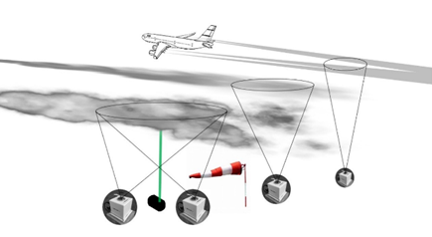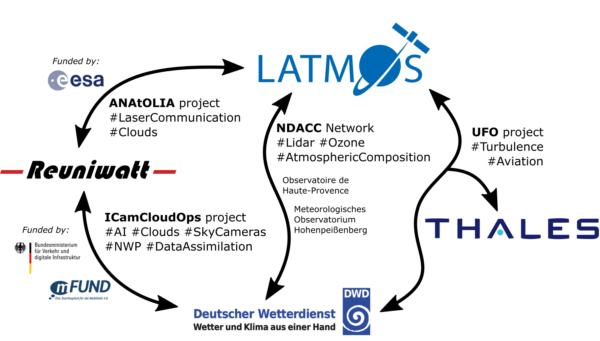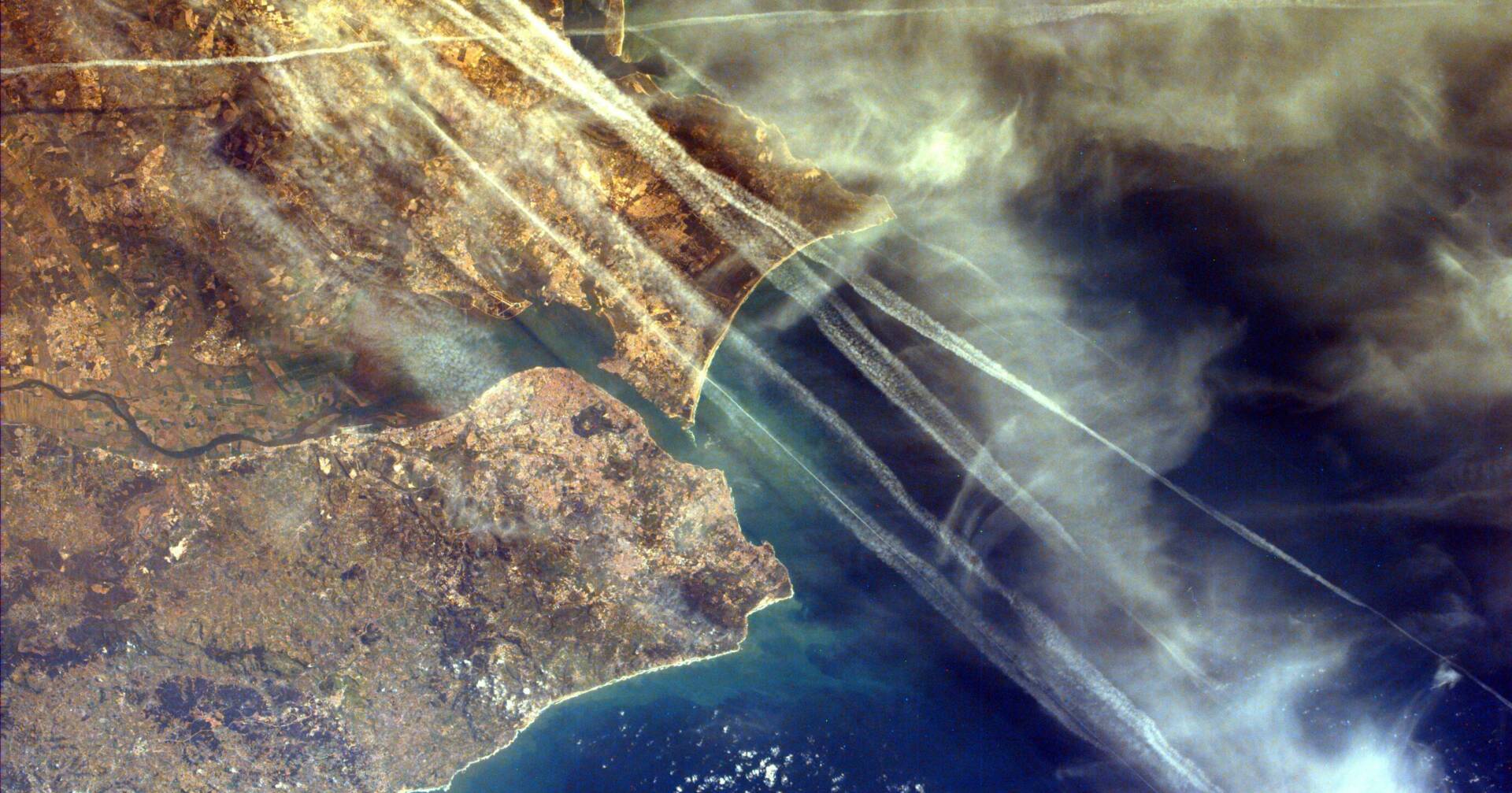The CONTRAILS project aims to develop and combine advanced trustworthy AI methods and physical models to improve contrail identification, characterization, data assimilation, and prediction. It aims to do this by achieving a better understanding of the overall physical process underlying their formation.
CONTRAILS Project – AI for parameterization, data assimilation and prediction
With respect to aerospace applications, the results of this project will provide tools to monitor the effects of contrails on climate and inform future experimental tests to optimize trajectories to prevent their formation.
The goal of the subproject at DWD is to develop assimilation and prediction methods for contrail and cirrus observations within the Numerical Weather Prediction (NWP) systems. We use the ICON model and its ensemble-variational data assimilation. The project will be directly relevant to the main customers of DWD.

Figure 1: Contrails observation with several sky imagers, allows for stereoscopy experiments (Source: CONTRAILS Consortium)
The subproject contributes to the three tasks “AI for contrail identification and dynamic prediction”, “AI and physical models for contrail analysis” and “Models, data assimilation and algorithm validation”. The identification task aims to process images from ground-based cameras and satellites in the visible or infrared range with AI algorithms to identify contrails and predict their evolution. A modular forward operator for contrail and cirrus observations will be developed based on a combination of (a) new AI algorithms, (b) improved physical parameterizations (based on classical and new neural network approaches), and (c) radiative transfer components. The operators will be integrated into the prediction system and tested on case studies.
Project lead: Dr. Stefanie Hollborn, Prof. Dr. Roland Potthast
Bilateral Franco-German cooperation
The CONTRAILS consortium consists in Germany of the German Meteorological Service (DWD) and on the French side of the THALES Group, the research institute LATMOS and Reuniwatt. The partners contribute their specific competences in the prediction of atmospheric evolution and processes (DWD), aeronautics and the use of artificial intelligence methods (THALES), remote sensing and climate science (LATMOS), and the development and operation of cameras for atmospheric observation and their linkage with numerical prediction methods (Reuniwatt).

Figure 2: The CONTRAILS Consortium: It consists of DWD, the THALES Group, LATMOS and Reuniwatt (Source: CONTRAILS Consortium)
Market perspective and product promise
The German Meteorological Service provides daily numerical weather prediction (NWP) forecasts to millions of users from global to high resolution regional scale and in the range of hours to weeks, with key customers in the aviation sector as well as in renewable energies and for climate applications. THALES and LATMOS are strongly committed to the aviation sector, with products and applications across the aviation value chain. Reuniwatt provides real-time images from all-sky cameras in the field of airports and photovoltaic plants, with products and applications of real-time control of processes, equipment and products.
Challenge and innovation
The observation, modeling, and prediction of contrails and high clouds, their interaction with air traffic, and their immediate and long-term climate impact is an important and challenging area of atmospheric science. With global to regional prediction systems based on modern ensemble data assimilation techniques, new artificial intelligence techniques and new observational systems can be seamlessly integrated into the analysis and prediction process. The consortium is breaking new ground in this area and expects to make fundamental scientific advances with immediate implications for prediction systems and applications.
Use Cases
New ground-based all-sky camera observations in combination with new satellite-based cloud observations in the infrared and visible range are automatically evaluated for the visibility of contrails and high clouds in real-time using artificial intelligence methods. The results are automatically fed into the observation pool for the analyses and forecasts of the numerical weather prediction (NWP), where they provide a significantly improved probability of formation of contrails and the climate-relevant clouds resulting from them, which are fed in real time into customer-oriented products for flight planning and flight control for airport operators, airlines and up to the pilots of the airlines for network planning as well as for the concrete planning of the next flight route.

Duration
March 2022 – May 2025
Budget
Total budget: 4 million € (sum of all partners)
Funding amount: 2.7 million € (sum of all partners)
Read the original article here: https://www.dwd.de/EN/research/projects/contrails/contrails_node.html
Title image source: NASA Jet Propulsion Laboratory
 About Reuniwatt (www.reuniwatt.com)
About Reuniwatt (www.reuniwatt.com)
Reuniwatt is a major player of the solar radiation and cloud cover assessment and solar and wind power forecasting. Based on solid Research and Development works, the company offers reliable products and services intended for professionals of various fields, making the best out of two key facets of the meteorology: atmospheric physics and data sciences. A particular focus has been placed on solar energy forecasting, while developing cutting edge solutions to improve the short-term prediction of the solar resource.
The company has won many grants, including H2020’s SME Phase 1 programme, which makes Reuniwatt a European Champion with regard to innovation. Reuniwatt has also been selected among the national fast-growing companies to join the prestigious French Tech 120 programme in 2020 and 2021, and the French Space Tour 2021



